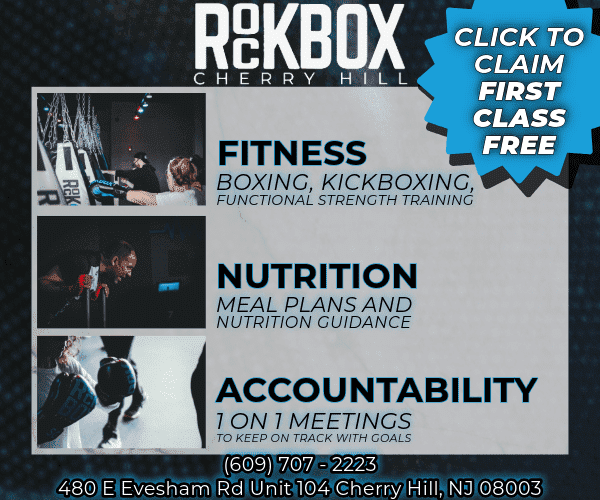Headaches aren’t just an annoyance. For some, they can be debilitating.
Julienne Verdi has lived with migraines her entire life, as has her son and her parents. For her, headache disorder advocacy is not just a cause – it’s deeply personal.
Verdi has spent two decades working in Headache Disorder health and advocacy, and for the past three and a half years, she’s brought that experience to her role as Executive Director of the Alliance for Headache Disorders Advocacy and its sister organization, the Headache Alliance. Together, these two branches focus on improving the lives of people with headache disorders through federal and state policy work, public education, awareness campaigns and support for early-stage research.
So next time you say it’s “just” a headache, here are a few things to keep in mind.
“People think a headache is no big deal, and a normal headache might not be. But these aren’t normal.”
Q: What is your experience with headaches?
I’ve had them since I was a child, but I didn’t seek treatment for it until I was in law school, when I started getting migraine aura, which causes visual and sensory disturbances. Colors would change and distort, then the migraine would come, which brings pain, irritability, balance issues, nausea, vomiting and aphasia, where I struggled to find words or communicate clearly during a severe attack. Sometimes, they’d be so unrelenting for days that I finally had to go to the ER.
Q: Why do we need advocacy for headache disorders?
There is so much stigma and misunderstanding. People think a headache is no big deal, and a normal headache might not be. But these aren’t normal. That stigma leads to delay in diagnosis, lack of support in workplaces and schools, and even skepticism from medical providers that can delay treatment during a headache attack. Migraines alone are the second leading cause of disability worldwide and the leading cause of disability for young women in the United States. Over 42 million people in the U.S. have their quality of lives impacted by headaches. And yet, there is a lack of specialists, they are underdiagnosed, undertreated, underfunded, under-researched and leave millions struggling with symptoms that affect their everyday life.
Q: Are headache disorders always migraines?
I use migraines as an example because it’s my lived experience, but there are more than 100 different types of headache disorders. They are some of the most disabling neurological conditions in the world.
Q: What causes these disorders?
It depends, and unfortunately there’s a real lack of research and understanding in what causes them. For some disorders, it can be genetic – we often see migraines run in families like mine. But that’s not always the case. New daily persistent headache is a disorder that pops up seemingly out of nowhere, sometimes after a virus like Covid. Hormonal imbalances can be a factor, which is likely why it affects women so disproportionately. Others, like post traumatic headache, are caused by traumatic brain injury, so we see it a lot in veterans.
Q: What triggers the headache attacks themselves?
It changes person to person, but triggers can be things like lights and sounds. That’s why it can be very hard for children in school settings with fluorescent lights and surrounded by noise. Smells can be a big one. We have a conference coming up, and we have to make sure hotel staff knows not to wear perfumes. Even foods can be triggers.
Q: What are some effective treatments?
There are a lot of medicines on the market now, including a new class of medications called CGRP inhibitors, which block a chemical in the brain that causes pain and inflammation and is now considered the first line of prevention treatment for migraines in particular. There are neuromodulation devices, which are medical tools that use electrical or magnetic stimulation to change nerve activity and relieve symptoms like pain or seizures. The issue is these treatments tend to not be covered by insurance, so there’s a financial barrier. Lifestyle changes can help many people as well. There’s a heck of a lot of old wives’ tales out there for different ways to treat headaches, and a lot of misinformation. For a while there, TikTok was telling people to put their feet in boiling water, then cold water. Maybe it works for a normal headache, but it’s certainly not going to help someone with a disabling headache disorder.
Q: How do these disorders affect people’s ability to work?
The unrelenting nature of these disorders means working can be very difficult, and a lot of people are on disability because of it. Because of the stigma, a lot of employers aren’t as accommodating as people need them to be, because they see it as just an excuse to get out of work. When in reality, it’s debilitating. They’re vomiting, they can’t look at a screen, the lights in the office may impact them, they may lose the ability to speak. It can even go so far as to paralyze an entire side of their body during an attack.
Q: How can employers or educators better support people with headache disorders?
Employers can help by making the workplace less triggering, like adjusting lighting or offering remote and flexible work options. Many people with headache disorders want to work but are often pushed out of the workforce because of a lack of understanding. Flexible environments can make a big difference in keeping them employed.

Q: How can people get involved in headache advocacy work?
One easy place to start is the free monthly Lunch and Learn webinars. They’re a great way to learn more about the issues and how you can help. There are also take action alerts that go out during the year, where you can quickly send a letter to your lawmakers to support policies that will affect the headache community.
A big opportunity to dive deeper is the Headache on the Hill program, which happens once in person in Washington, DC, each spring, and then virtually in the fall. It’s all about training advocates to share their personal headache stories in powerful and relatable ways, because while the statistics are important, it’s real stories that make an impact. It’s a great way to make your voice heard and help move the needle for people living with these conditions.
Q: What would you tell someone battling a headache disorder?
If you are someone who gets headaches often, that is not normal. There are treatments available.














